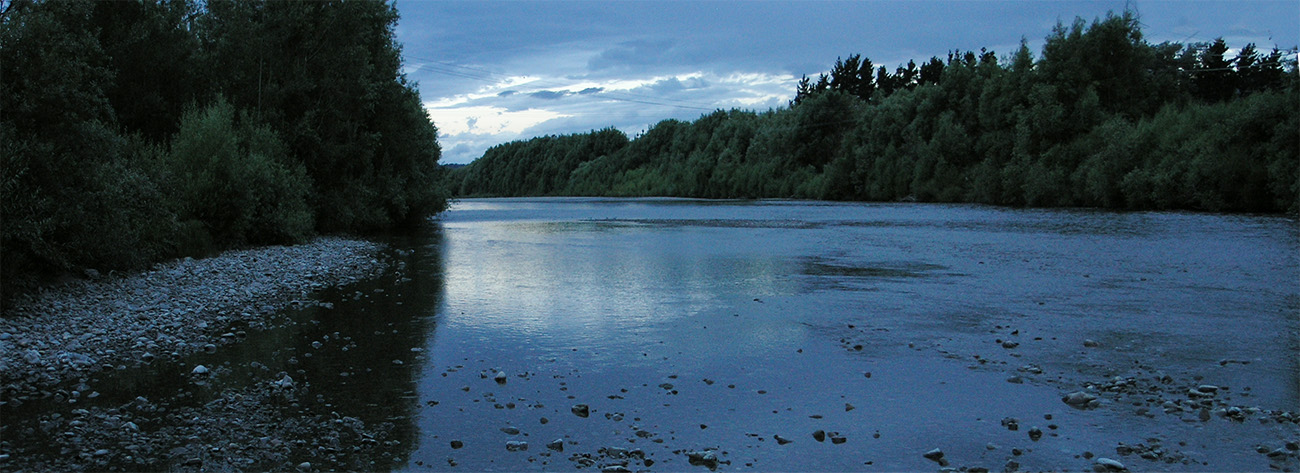These are some of my favourite single hand Skagit outfits for specific applications. Although I classify rivers according to flow rate (cubic meters per second), it is worth noting a wide slow-flowing river and a narrow fast-flowing river may have similar flow rates.
Many New Zealand rivers tend to be on the narrower faster-flowing end of the spectrum, and are therefore particularly suited to single hand rods, short heads and heavier tips.
Small rivers (2-9 cumecs):
A 9 ft presentation 5 wt with a Skagit Lite 150 for:
i. large weighted streamers on 7.5 ft of T-8,
ii. Moderately weighted streamers on #5 10 ft Replacement Tips
iii. Soft hackles and wee wets on 10 ft intermediate coated leaders around 50 grains.
A 5wt Loomis NRX LP is outstanding in this role.
Medium Rivers (10-25 cumecs):
A 9 or 9.5 ft 5 wt rod with:
i. A Skagit Lite 180 with S3/S4/S5 3D MOW light, T-7 Flo Tip or 9 ft of T-11 for fishing progressively deeper with large streamers and for stripping close.
ii. An intermediate Skagit Lite 180 and 10 ft #6 Rio Replacement tips for extra depth or staying deep for longer.
iii.A Scout 180 with 10 ft Intermediate Polyleaders and 10 ft #5 Sink 3 and Sink 6 Replacement Tips for fishing light to moderately weighted streamers when presentation is important. Requiring less stripping, this combination is great for swinging streamers or soft hackles on wide flowing water up to waist deep.
A 5wt Sage X-597 is a great stick for this purpose.
Larger Rivers (>25 cumecs):
A 9.5 ft fast 6wt or medium fast 7wt rod with:
i. Skagit Lite 240 and 10 ft T-7 to T-14 Flo Tips and 3D MOW tips for swinging and stripping weighted streamers.
ii. Skagit Lite intermediate 240 with light S5/S6/S7 3D MOW tip for extra depth and deep pools.
This is the ultimate single hand set-up for deep or fast water or when when the wind is up.
A 9.5 - 10 ft fast action 5 wt rod having good flex through the mid section with:
i. A Scout 180 with 10 ft #5 sink 3 and sink 6 Rio Replacement Tips for presentation work with light to moderately weighted streamers.
ii. A Skagit Lite 180 with S3/S4/S5 light 3D MOW, T-7 Flo Tip or 9 ft of T-11 for fishing progressively deeper with larger weighted streamers.
iii. A Skagit Lite intermediate 180 with S3/S4/S5 light 3D MOW and #6 Sink 6 Replacement tip for deep pools, staying deep in stretches of even depth and flow, and anywhere when the wind is blowing (see my article entitled ‘Single Hand Skagit: Intermediate heads’ for more on this).
I prefer the 5 wt for shallower rivers and for larger rivers in low clear summer and autumn conditions, when fish are spooky but tend to rise further to take a fly.
Single Hand Skagit - Science behind the magic |
|
| + | Where it all began |
| + | Head design |
| + | Sink tips |
| + | Casting heavy sink tips |
| + | Running lines |
| + | Reels |
| + | Rods |
| + | Intermediate heads |
| + | Favourite outfits |
| + | Conclusions |
| + | Shootout of 12 Skagit Heads I tested |
| + | Table of Sink Tip Recommendations |
| + | Table of Lengths and Weights of Sink Tips |
Single hand Trout Spey : Getting started with a 9 ft 5wt rod |
|
| + | Getting started |
| + | Rods and Skagit heads |
| + | Sink tips for Skagit heads |
| + | Tippet for Skagit heads |
| + | |
| + | Hybrid heads |
| + | Floating tips for Skagit heads |
| + | Running lines |
| + | Cost effective approach |
| + | Learning to Spey cast |
| + | A final word |
